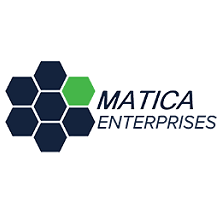Matica Enterprises (CSE: MMJ, OTCMKTS: MQPXF) investors had an excellent ACMPR Friday with the news of RoyalMax Biotechnology finally receiving its cultivation license. After numerous years in the making, Matica now finally has it’s hands on a coveted licensed producer designation.
While the company has not officially announced the news as of the time of writing, it is anticipated that the firm will issue a press release Monday morning, two days before recreational legalization in Canada. While the firm won’t have anything to sell to consumers on the first day of legalization, it can rejoice in the fact that they likely will in a little over a years time. Boris Ziger, CEO of Matica Enterprises, has made it clear via Twitter this weekend that the firm will begin production “as soon as humanly possible.”
Matica’s Current Market Position
It’s no secret that we have been relatively bearish on Matica Enterprises in the past, which was for good reason. However, it seems that the firms cult like following has cooled off, if only for the time being, allowing the company to have a more appropriate valuation for its current assets. The volume on the equity says as much, with the firm seeing a relatively low amount of traded shares day to day with an average of 1.9 million per day.
Curiously, the volume on Matica saw three times that average on Friday, with 6.4 million shares trading hands. This in turn has raised some questions as to who knew of the licensing deal before it was officially announced after hours by Health Canada. The net house for the day indicates that house 23, BBS was the net buyer for the day with a total net positive of 384,845 shares.
Curious transactions aside, the company is in a decent financial position. It currently has cash and cash equivalents of $6,478,668 as of June 30, 2018. Considering no major transactions have occurred since this point in time, it’s safe to say that the firm has cash on hand. In addition to the reported position, on September 10th the company announced that it now has access to a $20 million draw-down equity facility via Alumina Partners should it need addition funding.
With general and administrative expenses of $347,647 for the previous quarter, Matica seems to finally have a grasp on its expenditures. Thus, the largest hit to its current cash position would be that of capital expenditures put towards the development of its second facility, located in Hemmingford, Quebec.
In terms of the RoyalMax deal, it is believed that Matica will soon take ownership of 65% of the firm as per the definitive agreement. As per the agreement signed in April 2017, the company was required to fund a minimum of $2.2 million for the build out of the 10,000 square foot RoyalMax facility. Upon facility completion and licensing by Health Canada, Matica would then earn a 65% ownership stake in the company. A further $400,000 is then due within thirty days of licensing for Matica to earn the final 5% stake in the company, bringing it’s total to 70%. A further $400,000 is then due to the owners of RoyalMax after twelve months of production.
What is unclear based on Matica’s disclosures related to the deal however, is the specifics of the licensing. It does not identify whether 65% will be earned upon RoyalMax receiving its cultivation license, or whether that applies specifically to the sales license. This inherently will make a significant difference on when the firm will take ownership of the majority of Royalmax Biotechnology.
As of June 30, 2018, Matica Enterprises had invested $5,215,905 in RoyalMax Biotechnology, a figure that will likely take years to recoup.
This estimate is based on a few factors. First, let’s assume an average yield of 40g/sq ft of grow space, as established via both Cannabis Business Times, as well as as this study by Carnegie University. We’ll also assume four harvests per year, although it’s likely that three is more appropriate. Lastly, we’ll assume a wholesale price of $6.40 per gram, based on an AGLC infographic. This too is likely high, as it would include a percentage of margin for the commission as well. Lastly, let’s assume a rather conservative cost per gram of $1.70, given that it is an indoor facility located in Quebec, where electricity rates tend to be lower for licensed producers.
Alright, so lets do the math. If Matica and RoyalMax were able to average a yield of 40g/sq ft of grow space (assuming zero space for walkways and such, we’re keeping it simple here), in their 10,000 square foot facility they would produce 400,000 grams of cannabis per harvest. Assuming no loss due to environmental factors, this would equate to $2,560,00 in revenues per harvest. With four harvests per year, this would total $10,240,000 in revenues.
However, from that figure we need to now deduct a few things. First and foremost, the cost per gram in production for the year will be at minimum $2,720,000. This drops gross profit down to $7,520,000 per annum. Next, we need to deduct RoyalMax’s portion of the harvest income which equates to 30%, and represents $2,256,000. This leaves $5,264,000 in gross profits per annum for Matica Enterprises, or $1,316,000 per harvest. If the firm can only manage to conduct three harvests per year, it equates to $3,948,000 in gross profits per year.
Although relatively bullish given the figure invested by Matica to achieve production, there are a few caveats to this estimate. First, yields of 40g/sq ft is the average identified via two sources. Both sources identified a range of yield per sq ft that goes from 20g to 60g, so our figures could be +/- 50% alone based on this. Second, this assumes that every square foot of the 10,000 square foot facility is covered in plant canopy. This means no walkways between plants whatsoever, and inherently means the plants then cannot be inspected for possible disease or fungi. Third, it assumes absolutely no slippage whatsoever in an entire year of operations. Lastly, it also includes a relatively low cost per gram production cost for an indoor facility with no greenhouse. This cost per gram of production is very likely above the $2.00 range in reality.
Napkin equations aside, further costs have yet to be incurred before Matica and Royalmax will be able to sell any product. Achieving a cultivation license is a major milestone, however it is not the end of the process. As per White Sheep Corp’s handy days to sales tracker, found here, the average time from cultivation to sales licenses is 363 days. Within this time frame, production costs will be incurred without any revenues to offset this expense. At a cost of $680,000 per harvest at minimum, this can get expensive quick for Matica. Thankfully, it has the cash on hand to weather the wait.
Matica shares closed at $0.195 Friday, up a half penny from the day prior after seeing volume of 6.4 million. It currently has a market cap of $57.6 million.
Information for this briefing was found via Sedar, The CSE, Cannabis Business Times, Health Canada, and Matica Enterprises. The author has no securities or affiliations related to this organization. Not a recommendation to buy or sell. Always do additional research and consult a professional before purchasing a security. The author holds no licenses.









